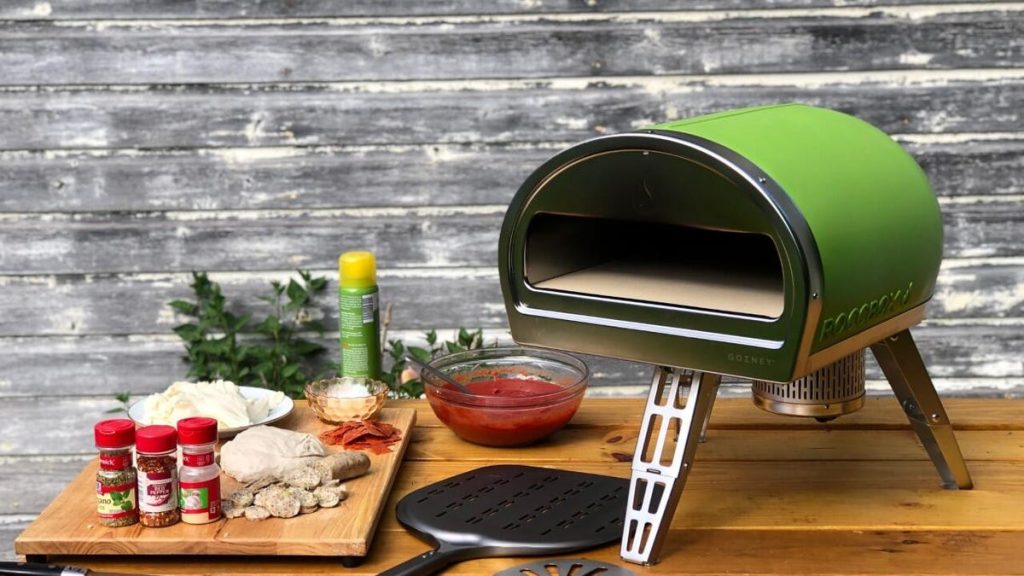Choosing the right fuel type for your outdoor pizza oven hinges on convenience, cooking style, and personal preference. Gas-powered ovens, primarily fueled by propane, offer the simplest operation. They connect easily to standard propane tanks, ignite instantly, and reach cooking temperatures within minutes. This convenience is coupled with a clean burn, producing minimal smoke and ash, simplifying cleanup. Conversely, wood and charcoal-fired ovens demand more hands-on involvement. Loading and potentially reloading fuel, longer preheating times, and the challenge of maintaining consistent temperatures require more attention. While the romantic notion of wood-fired pizza suggests a smoky flavor, the reality is that pizzas cook too quickly to absorb significant smoke. However, the pleasant aroma of burning wood adds to the overall cooking experience. Wood pellets offer a convenient alternative to traditional firewood, available in various wood types and easily sourced. The cost difference between fuel types is negligible, ultimately making the choice a matter of individual preference. Finally, electric pizza ovens exist, though they often reach lower maximum temperatures, raising concerns among pizza purists about achieving optimal crust char and overall cooking quality.
Size and portability are key factors to consider when selecting an outdoor pizza oven. For those with dedicated outdoor kitchen space, larger, heavier, and potentially stationary ovens are viable options. These ovens often offer greater cooking capacity, allowing for larger pizzas or even roasting whole chickens. However, if storage space is limited or the oven needs to be moved regularly, portability becomes paramount. Portable pizza ovens, typically weighing around 20 pounds, offer convenient storage and transportation. Semi-portable models strike a balance between size and portability, offering more cooking space than truly portable options while still allowing for some degree of movement. Consider your space constraints and intended usage when deciding on the appropriate size and portability.
Essential accessories enhance the pizza-making experience and protect your investment. A pizza peel, a paddle-like tool, is indispensable for safely maneuvering pizzas in and out of the scorching oven, reaching temperatures up to 950 degrees Fahrenheit. Avoid relying on flimsy spatulas or tongs, which pose a burn risk. A protective cover is another worthwhile investment, safeguarding the oven from the elements when not in use, especially for those who intend to leave it outdoors. While some ovens include a custom cover, many do not, requiring a separate purchase. These accessories are crucial for efficient and safe pizza making and prolonging the oven’s lifespan.
Cost and value are important considerations when choosing a pizza oven. Quality models typically start around $300, with prices escalating for larger, more robust ovens that boast faster heating times and higher maximum temperatures. While budget-friendly options under $250 exist, investing in a reputable brand often ensures better performance, durability, and overall cooking results. Consider your budget and desired features when evaluating the cost and value proposition of different pizza ovens. Remember that a slightly higher initial investment might translate to a more satisfying and long-lasting cooking experience.
Fuel type is a crucial decision point. Gas offers unparalleled convenience with quick start-up and easy temperature control, ideal for those prioritizing ease of use. Wood and charcoal provide a more traditional, hands-on approach, appealing to those who relish the process and the subtle nuances of wood-fired cooking. Wood pellets offer a compromise, combining the convenience of readily available fuel with the flavor profile of wood. Electric ovens cater to indoor or limited-space scenarios, but their lower temperatures may compromise the authentic pizza experience.
Size and portability should align with your available space and intended usage. Larger, stationary ovens are suitable for dedicated outdoor kitchens, while portable options offer flexibility for smaller spaces and occasional use. Semi-portable models bridge the gap, providing increased cooking capacity without sacrificing too much portability. A pizza peel is indispensable for safe pizza handling in the high-heat environment, and a protective cover shields the oven from the elements, extending its lifespan. Cost and value are interconnected, with higher-priced models often offering superior performance, durability, and features. Weigh your budget against your desired features to make an informed decision. Cheaper options may compromise quality and longevity.

